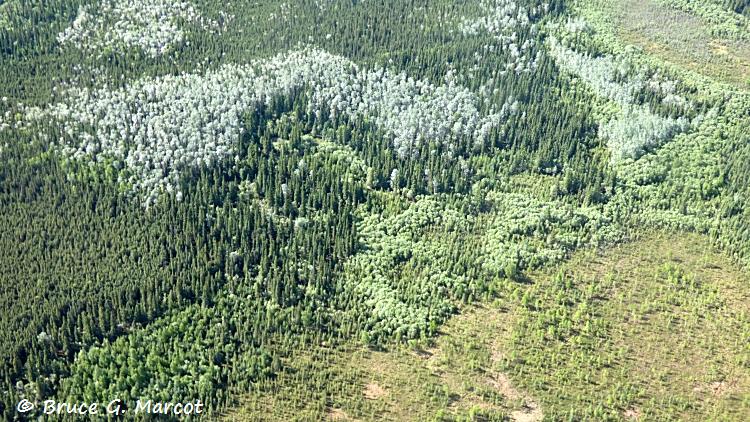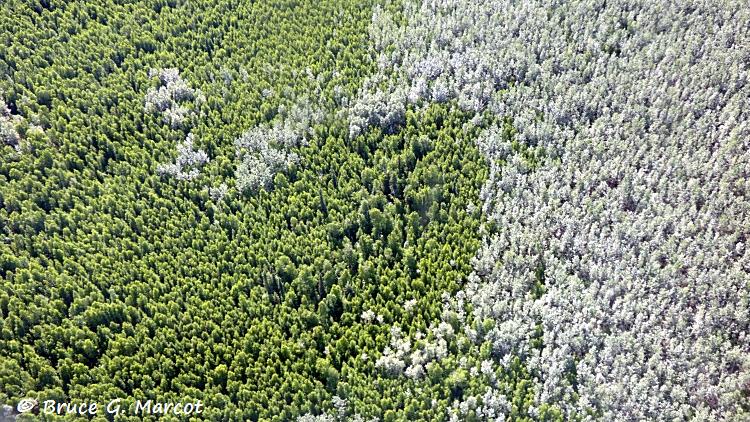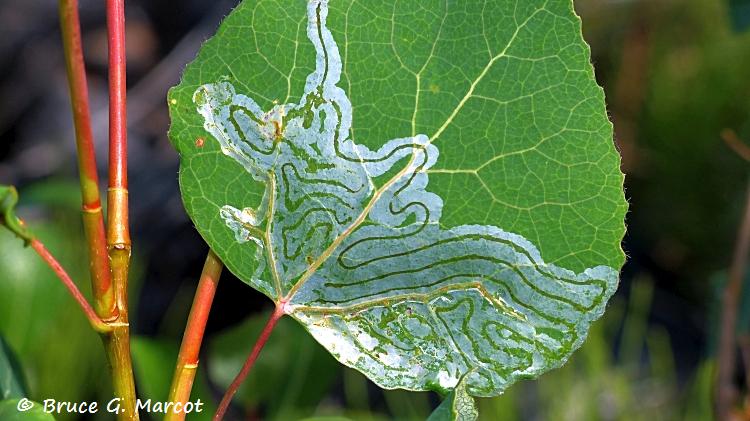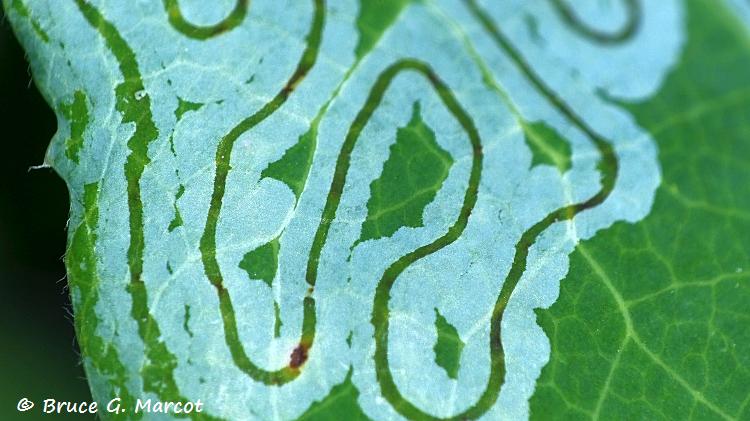|
Explanation: This
week we are flying over boreal forests of spruce and birch, about two-thirds
of the way from Fairbanks down to the Alaskan Range. Ah, what a
beautiful fall color scene this is, you might say. But
... wait ... it is only early June here in central Alaska. Then what are
these colors? The
light-colored trees are Alaska paper birches, being hit hard by an invasive
insect called the amber-marked birch leaf miner (Profenusa thomsoni)
that is devastating a large swath of native birch stands here in the far
north. In the early 1900s, this leaf miner was introduced probably from
Europe into northeast U.S., and has spread widely throughout much of Canada,
and first reported in Alaska in 1996 in Anchorage. The
amber-marked birch leaf miner belongs to order Hymenoptera that includes
wasps, bees, and ants, and to family Tenthredinidae, a large insect family
with many species of sawflies. This insect likely spread by way of
ornamental birches and then switched host trees to now attack the native birch
trees.

The insect spreads by flight, lands in a usable patch of birches,
then spreads to literally eat its way across the forest canopy.
This leaf miner was then detected first in
Fairbanks, central Alaska, in 2002.

In this scene, the entire pure stand of birch trees on the
right
has been hit hard by the amber-marked birch leaf miner,
and is now spreading into adjacent, smaller, more isolated
patches of birches.
Trees and stands defoliated by the miner are then susceptible to attack by
other native and introduced pest insects, and by pathogens such as
fungi.

Here, a leaf miner -- possibly the same species -- has left its mark
on a leaf of a quaking aspen (Populus tremuloides).
It is the larvae of the minor that chews its way across and into
the surface of leaves, turning them a pale color.
But it is
quite interesting seeing the looping pattern
that the larvae follow in their hungry quest.

The larvae seem to leave an uneaten trail to their
foraging foray.
Up to 3 dozen or more miners can feed on the same leaf.
At
present, there seems to be no program or treatment
to rid these fragile forests of this pest.
|
Index |
Location | Search | About EPOW | ... Next >
Google Earth locations